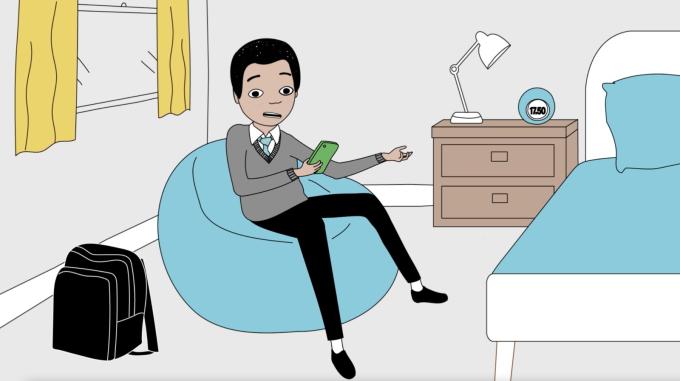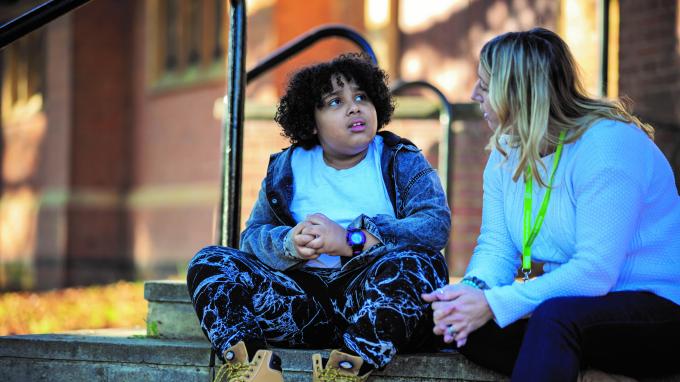Content Warning: This blog contains content surrounding pornography, domestic abuse, violence against women and girls, and sexual abuse.
We spoke to Barnardo’s Senior Policy Advisor Jess Edwards, and Development Children’s Service Manager Laura Tomsa, to discuss the impact of pornography on children and young people and what we are doing to protect them from it.
How does pornography impact young people and children?
Viewing pornography and other pornographic content can have a big impact on young people and children. From their understanding of sex and relationships, to the way they think about their own body, pornography has the powerful ability to distort understandings.
Barnardo’s is concerned about the impacts of pornography on children. In our services, we see how viewing pornography can harm children – affecting their mental health, and perceptions of healthy relationships, sex, and issues like consent.
Jess Edwards Barnardo’s
Senior Policy Advisor
Some pornography depicts “instances of violence and coercion, especially towards women”, Laura explains. When young people have access to this kind of content, it can “impact their perceptions of gender roles within relationships, and can put young people and women at greater risk of abuse”, she continued.
A report by the Children’s Commissioner for England from May 2023 found that almost half of 16–21 year-olds they asked thought girls expected sex to involve physical aggression.*
“Content that would be prohibited offline is prevalent online, and considered mainstream”, Jess added. “This [content] includes sexualising children, depictions of incest, and content which shows overt sexual violence towards women, including forced penetration, gagging, and strangulation”, she continued.
“Offline, this content would be prohibited and illegal to own on DVD and Blu-Ray, and prohibited for Video on Demand services, but it is prevalent online.”
With access to this content being incredibly easy online, we are concerned that many children and young people could be engaging in media that is normalising aggression towards women and girls.
We are also concerned about the types of pornographic content that are widely available on mainstream sites, and are calling for this content to be regulated, and brought in line with offline standards.
Jess Edwards
Barnardo’s Senior Policy Advisor
Pornography disproportionately impacts violence against women
"Research into the titles of videos available on the landing page of the UK’s three most popular pornography websites revealed that one in eight titles described activity constituting sexual violence", Jess noted. This normalisation of aggression towards women in pornography can be detrimental to children and young people’s perceptions of healthy relationships.
"The presence of physical aggression in pornography is analysed in many other studies. For example, a study that analysed heterosexual scenes published on Pornhub and XVideos found that “45% of scenes from Pornhub and 35% of scenes from XVideos contained at least one act of physical aggression. Concerningly, the study found that women’s responses to the aggression were either positive or neutral, and rarely negative”, Jess noted.
“The Government’s own research has found that there is a “widespread consensus about the harmful role that violent pornography can play in violence against women and girls.”
In light of this evidence, “we are calling for the regulation of online pornographic content to be brought in line with how it is regulated offline and look forward to working with the Government through the Review into Pornography on this”, Jess emphasised.
We are concerned that this content normalises violence against women and girls, and can lead to violence both online and offline, including domestic abuse.
Jess Edwards
Barnardo’s Senior Policy Advisor
Recognising domestic abuse
Recognising domestic abuse is incredibly important in protecting young people from further harm, you can read more about the signs of children experiencing domestic abuse and the support available to them here.
It [is] imperative that professionals, services and the wider public are aware of the signs to look out for. Domestic abuse is everyone’s business, and we all have a role to play in ensuring that children, young people and families have access to support that provides them with opportunities to recover from their experiences.
Laura Tomsa
Development Children’s Service Manager
The Online Safety Bill
To ensure a safer environment for children and young people online, we have been pushing for changes to the laws surrounding online pornography.
We have been successful in this space, and “through the Online Safety Act, we [have] successfully led a campaign to make sure that the Act introduced robust age verification to prevent under 18s from accessing harmful pornographic content on both dedicated pornography websites and social media websites”, said Jess.
Barnardo’s is continuing this work by working closely with Ofcom to ensure proper implementation of the Online Safety Act.

How to speak to children about keeping safe online
Read expert tips on starting conversations with your child about staying safe online.

What is domestic abuse?
Learn more about domestic abuse and it’s affect on children from our specialists.

Our other policy work
Find out how we call for improvements to the law, policy, or practice that will help change children’s lives and the systems around them for the better.

